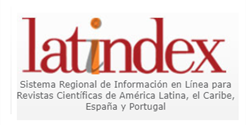EDUCATIONAL TECHNOLOGY: TOOLS AND STRATEGIES FOR LEARNING
DOI:
https://doi.org/10.56219/dialctica.v2i26.4690Keywords:
Learning, Strategies, Tools, Educational TechnologyAbstract
The evolutionary development of humanity is presented as a dizzying aspect, especially due to the constant presence of technology, which evolves by leaps and bounds and therefore directly impacts the educational environment, from there, the approach of educational technology is presented as a systematic process that responds to the insertion of them within pedagogical spaces, based on this, this argumentative essay type article deals with how educational technology can become tools and strategies for the student to build their own learning and that these in turn become meaningful and lasting, when students learn through technology, it manages to promote essential changes in which processes stand out that are essential to motivate the achievement of knowledge that respond to the demands of today. A methodology is configured that starts from the postulates of documentary design, due to the approach of different references that serve as a basis for the concretion of the elements that emerge from there. The conclusions establish a process in which educational technologies are valued not only as a means, but as a strategic foundation that promotes the applicability of technological tools from a didactic and pedagogical perspective to energize the school environment.
Downloads
References
Collins, A. (2016): "El potencial de las tecnologías de la información para la educación" en VIZCARRO, C. y LEÓN,].A. (Eds.): Nuevas tecnologías para el aprendizaje. Madrid. Pirámide.
Díaz, F. (2013). Estrategias de Super Aprendizaje. México. Trillas.
Martínez, J. (2024). Innovación y estrategias en la educación contemporánea. Editorial Saber y Enseñar.
Gómez, L. (2004). Metodologías efectivas para la enseñanza de la lectura. Editorial Aprendizaje Activo.
Ramírez, M. (2013). Creatividad y aprendizaje en contextos educativos. Ediciones Innovar.
Herrera, P. (2021). Estrategias tecnológicas para la educación del siglo XXI. Editorial Futuro Digital.
Martínez, R. (2021). Competencias digitales docentes y su estado en el contexto virtual. Revista peruana de investigación e innovación educativa, 1(2), e21038-e21038. Documento en línea. Disponible https://doi.org/10.15381/rpiiedu.v1i2.21038
Monereo, C., (2004) El Aprendizaje Estratégico En La Sociedad Del Conocimiento. Conferencia presentada en el evento I encuentro sobre aprendizaje estratégico. UPEL-IPC, Caracas Venezuela 26- 30 de Julio de 2004.
Sancho (2005). Para una Tecnología Educativa. Barcelona: Horsori.
Moreno, A. (2022). Gamificación y aprendizaje significativo en matemáticas: una propuesta para secundaria. Revista Iberoamericana de Educación
Morin, E. (2004). Introducción al pensamiento complejo (2.ª ed.). Gedisa.
Skinner. (2001). Tecnología de la enseñanza. Barcelona, Herder.
Smith, (2020). Acceso a información y recursos educativos a través de la tecnología. Journal of Educational Technology, 15(3), 112-130.
UNESCO. (2019). Marco de competencias de los docentes en materia de TIC elaborado por la UNESCO. https://unesdoc.unesco.org/in/documentViewer.xhtml?v =2.1.196&id=p::usmarcdef_0000371024&file=/in/rest/annotationSVC/DownloadWatermarkedAttachment/attach_import_dd819d1d-270f-4042-8f41-e51ec1ac639e%3F_%3D371024spa.pdf&locale=es&multi=true&ark=/ark:/48223/pf0000371024/PDF/371024spa.pdf#%5B%7B%22num%22%3A241%2C%22gen%22%3A0%7D%2C%7B%22name%22%3A%22XYZ%22%7D%2C51%2C842%2C0%5D
Downloads
Published
How to Cite
Issue
Section
License

This work is licensed under a Creative Commons Attribution-NonCommercial-ShareAlike 4.0 International License.
La revista Dialéctica conserva los derechos patrimoniales (copyright) de las obras publicadas, que favorece y permite la reutilización de los mismos bajo la licencia Creative Commons Atribución-NoComercial-CompartirIgual 4.0 , por lo cual se pueden copiar, usar, difundir, transmitir y exponer públicamente, siempre que se cite la autoría y fuente original de su publicación (revista, editorial, URL y DOI de la obra), no se usen para fines comerciales u onerosos y se mencione la existencia y especificaciones de esta licencia de uso. Si remezcla, transforma o crea a partir del material, debe distribuir su contribución bajo la misma licencia del original.











